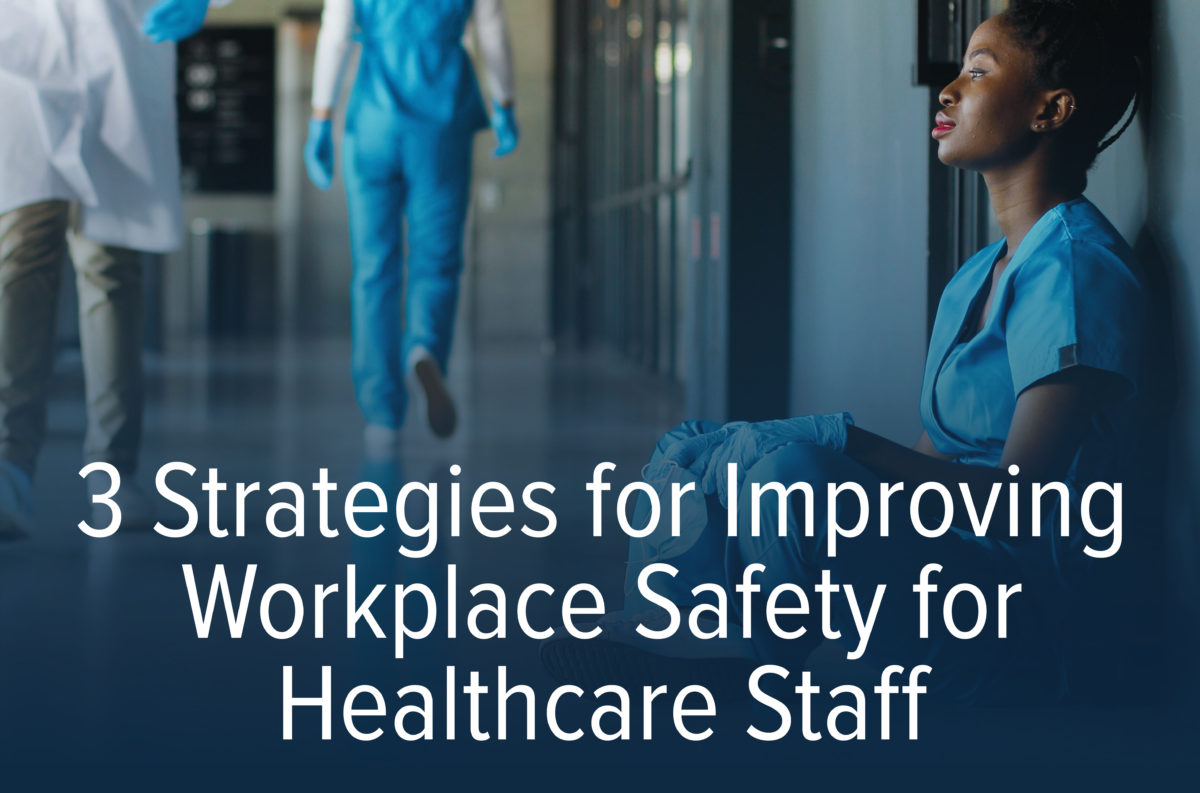
As a healthcare professional, you wouldn’t expect to go to work and encounter violence. You show up to take care of patients and promote wellness. But, as if mounting pressures from staff shortages and work overload haven’t taken enough of a toll on staff, workplace violence rates in healthcare settings are climbing.
In the second quarter of 2022, two nurses were assaulted every hour, on average. That translates to 57 assaults per day and 5,200 assaults total. In the first few months of 2022, nearly half of nurses reported a small or significant increase in workplace violence, marking a 57-percent increase from survey findings in September 2021, and a 119-percent increase from March 2021.
With figures like these, healthcare workers are concerned for their safety when they go to work. Patient care becomes more complicated at a time when it desperately needs relief. Furthermore, exposure to aggressive patients negatively impacts medical teams’ diagnoses and procedural performance, resulting in increased likelihood of medical error.
As stressors in the healthcare space have been exacerbated by the pandemic, it’s difficult to pinpoint who or what is at fault for the rise in violent incidents towards healthcare staff. However, what we do know is that both staff and patients are less safe when numbers are on the rise. So, what can we do? How do we actually decrease violent incidents and increase workplace safety to protect healthcare staff?
Workplace Safety Legislation
One crucial step towards protecting healthcare staff from workplace violence is the implementation of workplace safety legislation. The medical community is urging the government and regulatory bodies to recognize the urgency of the situation.
As part of its legislative priorities, the American Nurses Association has called on Congress to pass the Workplace Violence Prevention for Health Care and Social Service Workers Act. This act would require the Occupational Safety and Health Administration to develop and enforce industry-specific workplace safety standards for healthcare employers.
The American Hospital Association and other provider groups are also working to criminalize assault or intimidation of hospital workers by urging Congress to enact the Safety from Violence for Healthcare Employee Act.
Recently, the Occupational Safety and Health Administration (OSHA) began developing a new standard called “Prevention of Workplace Violence in Healthcare and Social Assistance.” In March 2023, OSHA took the first step by convening a Small Business Advocacy Review (SBAR) panel. This panel provides representatives from small businesses and small local government entities with the opportunity to contribute their input during development phases. Rulemaking will be focused on Type-II workplace violence situations, which involve violence perpetrated by patients, clients, and visitors in healthcare facilities.
Initiatives like these are where healthcare leadership is working to move the needle on workplace safety. However, there are things health organizations can be doing on the ground to decrease workplace violence in a tangible way in the meantime.
Workplace Violence Prevention Strategies
In addition to legislation, healthcare organizations must prioritize enacting effective workplace violence prevention strategies. Here are three strategies to consider:
Encourage safe dressing
Implement clear identification protocols for staff, such as badges or uniforms, to ensure that patients can easily identify authorized personnel. This reduces the risk of mistaken identity and potential violent encounters.
Additionally, National Institute for Occupational Safety and Health (NIOSH) recommends:
- Removing anything that could be used as a weapon or taken
- Hair should be tied back so it cannot easily be pulled
- Avoiding wearing loose hanging earrings or necklaces
- Avoiding overly loose clothing could get caught on something and overly tight clothing can restrict movement
- Use breakaway safety cords or lanyards for name tags, keys, etc.
Use violence risk assessment tools
Leverage technology and employ violence risk assessment tools that consider factors such as patient history, past incidents, and behavioral indicators to identify individuals at a higher risk of displaying violent behavior. Early detection allows for appropriate precautions to be taken.
Three recommended tools include: Triage Tool, Indicator for Violent Behavior, and Danger Assessment Tool.
Provide comprehensive training
Prepare your healthcare staff with comprehensive training on de-escalation techniques, conflict resolution, and self-defense. These skills empower employees to effectively manage potentially violent situations and protect themselves and their colleagues.
Training has been shown to effectively decrease workplace violence rates. For example, UCHealth enrolled their staff in an online course covering standard processes to prevent or de-escalate workplace violence. After training, violent incidents decreased by 34%, reported 11% decrease in violent restraint utilization, and employee de-escalation confidence metrics increased by 5%, indicating staff felt safer following training, even if an incident hadn’t occurred.
As workplace violence rates continue to rise in healthcare settings, staff need action on behalf of their organizations. Passing workplace safety legislation, including regulation enforcement, perpetrator criminalization, and standard process development lays the foundation for a safer environment. Concurrently, healthcare organizations should continue to refine strategies like safe dressing, violence risk assessment tools, and comprehensive training to mitigate violence risks. By prioritizing staff safety, we can protect healthcare professionals, improve patient care, and foster a violence-free healthcare environment. Collaboration among healthcare leaders, policymakers, and stakeholders is essential in addressing this urgent issue and ensuring the well-being of both staff and patients.
From the beginning, Amplifire has relied on innovative brain science to guide its product development to create the most effective learning and training solution, perfectly tailored to the way the human brain works. Learn more about how Amplifire helps people learn better and faster with online learning by requesting a demo.







